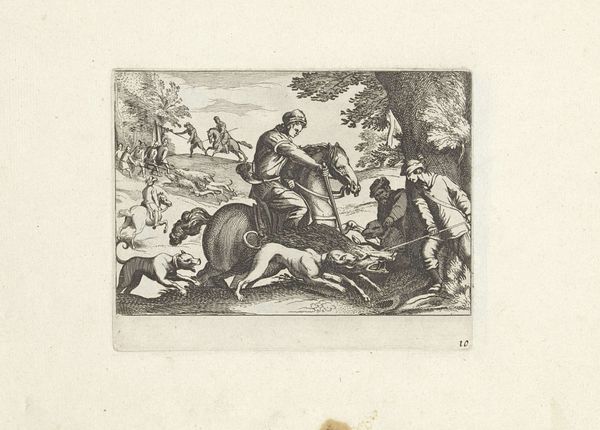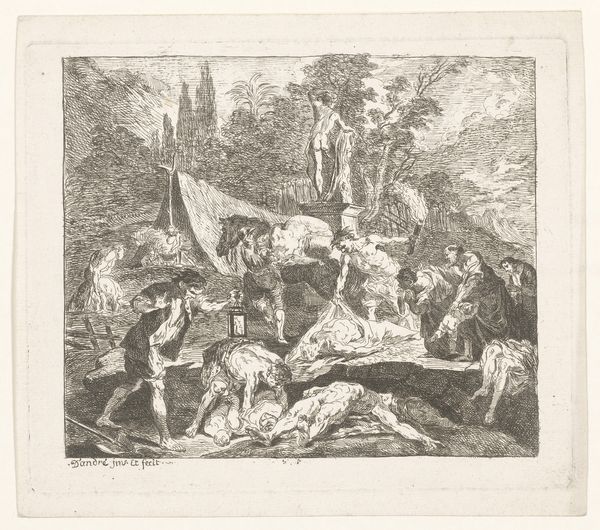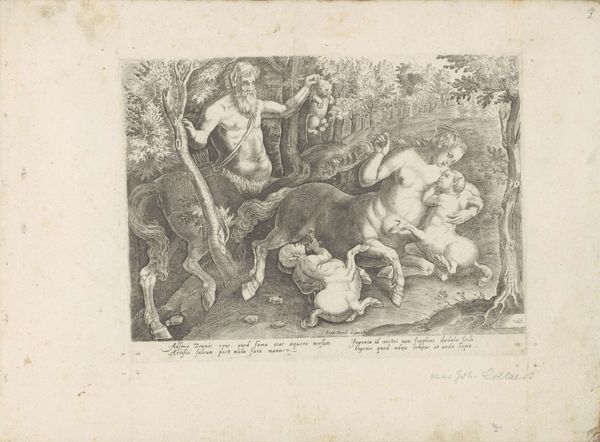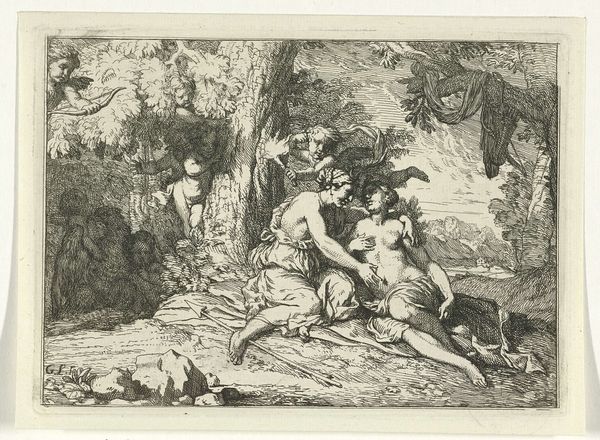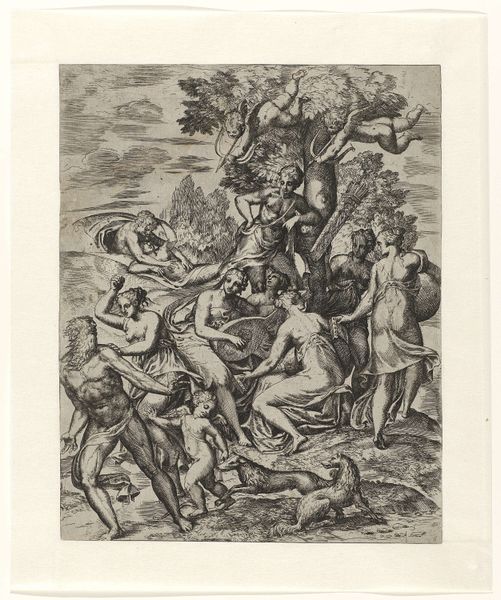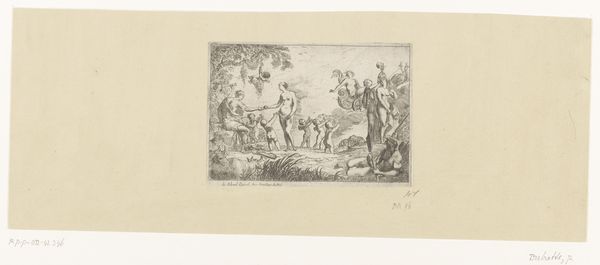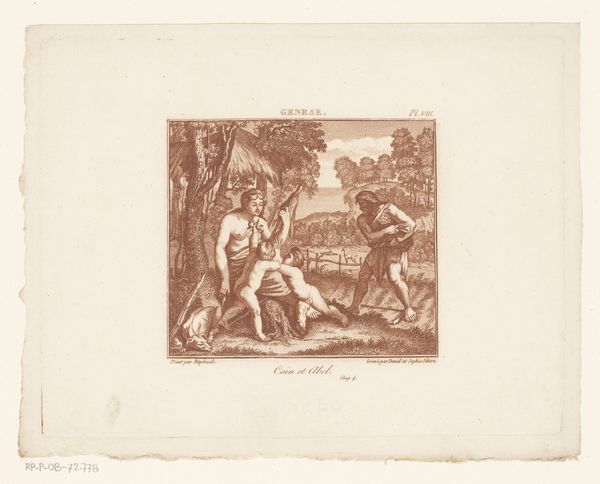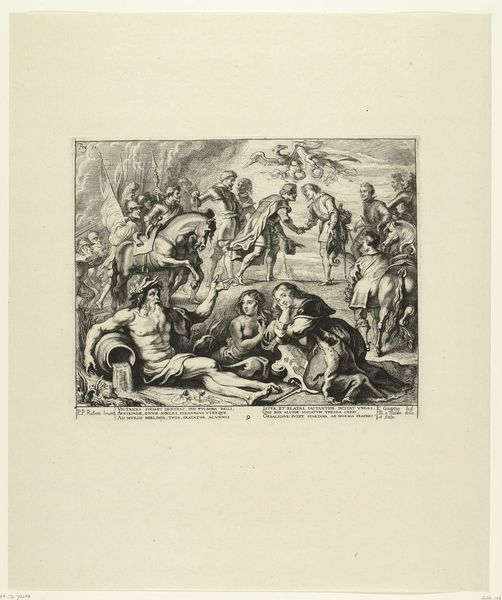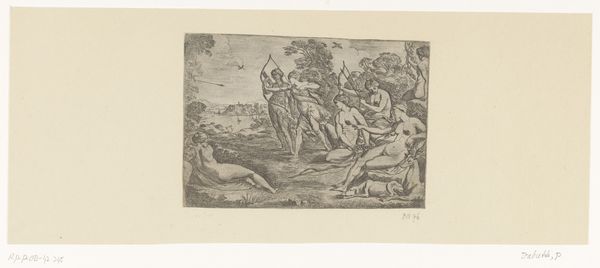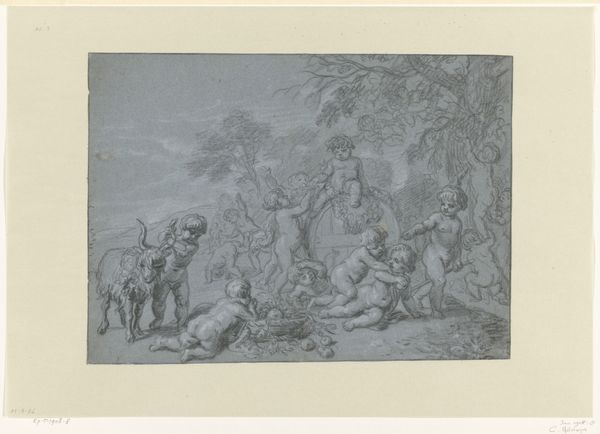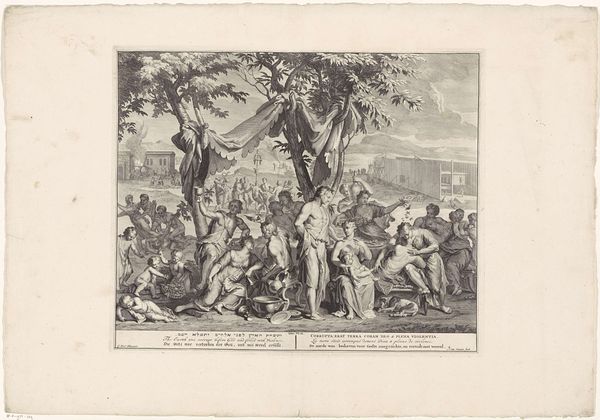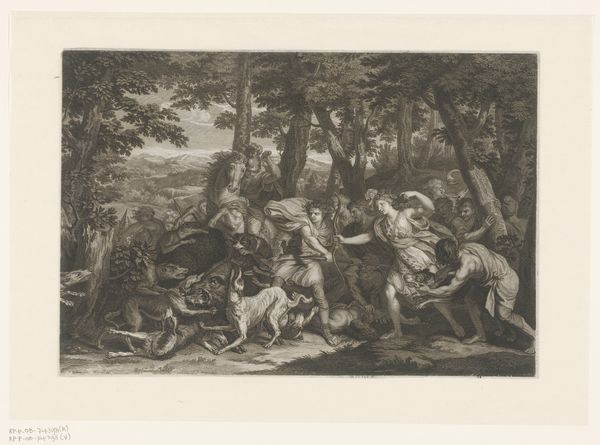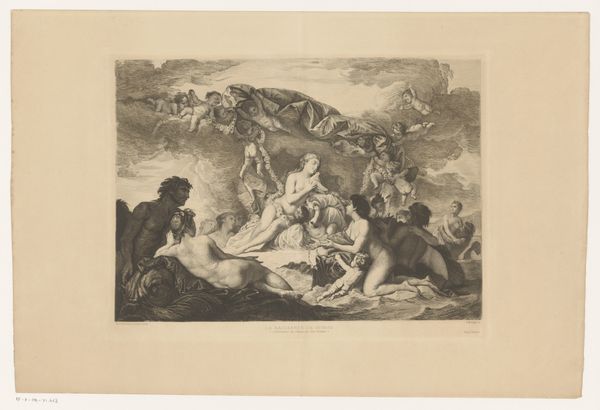
print, paper, engraving
#
photo of handprinted image
#
allegory
#
ink paper printed
# print
#
old engraving style
#
landscape
#
figuration
#
paper
#
history-painting
#
engraving
Dimensions: height mm, width mm
Copyright: Rijks Museum: Open Domain
Curator: Here we have a piece titled "Ocyrhoë verteld haar vader Cheiron het lot van Aesculapius," made in 1866 by Johannes Arnoldus Boland. It’s an engraving printed on paper. Editor: Well, right away, the drama! It’s heavy on atmosphere, you know? The shading and contrast make it feel like a dark prophecy unfolding. The composition almost splits into two worlds with the figures placed so deliberately in opposition. Curator: Exactly. Boland captured a poignant moment from mythology. Ocyrhoë, a nymph with prophetic gifts, is revealing to her father Cheiron, the centaur, the fate of Aesculapius, the god of medicine. It’s interesting to see how this narrative highlights the themes of destiny and knowledge within a social framework of myth and allegory. Editor: And you feel the weight of that knowledge in the centaur’s posture. He's not just receiving information; he's burdened by it. The surrounding landscape almost mirrors his inner turmoil, don’t you think? Curator: I think you've nailed it. The use of landscape as a mirroring of emotional states was fairly typical in historical paintings during that time, and the social impact of medical understanding and prophecy definitely play their role in this allegory. This isn’t just about predicting the future; it's about understanding the role and responsibility of those with unique gifts within society. Editor: Looking closely, I’m drawn to the old engraving style that renders textures beautifully despite the piece being just shades of gray. From the leaves on the trees to the drapery—everything's rendered with fine lines giving the impression of form, creating a very tangible sensation despite being on paper. It really does feel "handprinted" in all senses. Curator: It reflects a deep understanding of historical styles and traditions, but it also adds its unique interpretation. Think about how prints, engravings in particular, allowed stories and ideas to circulate more widely, democratizing access to these allegorical scenes and narratives. Editor: Absolutely. What begins as a piece about individual fates evolves into something much larger when shared through printing processes! There is so much implied weight. Curator: Indeed, looking closer reveals the nuanced complexities and makes us wonder the responsibility of telling the future versus the joy of knowing it. Editor: Precisely. So many layers hidden within what looks, at first glance, a mere snapshot.
Comments
No comments
Be the first to comment and join the conversation on the ultimate creative platform.
